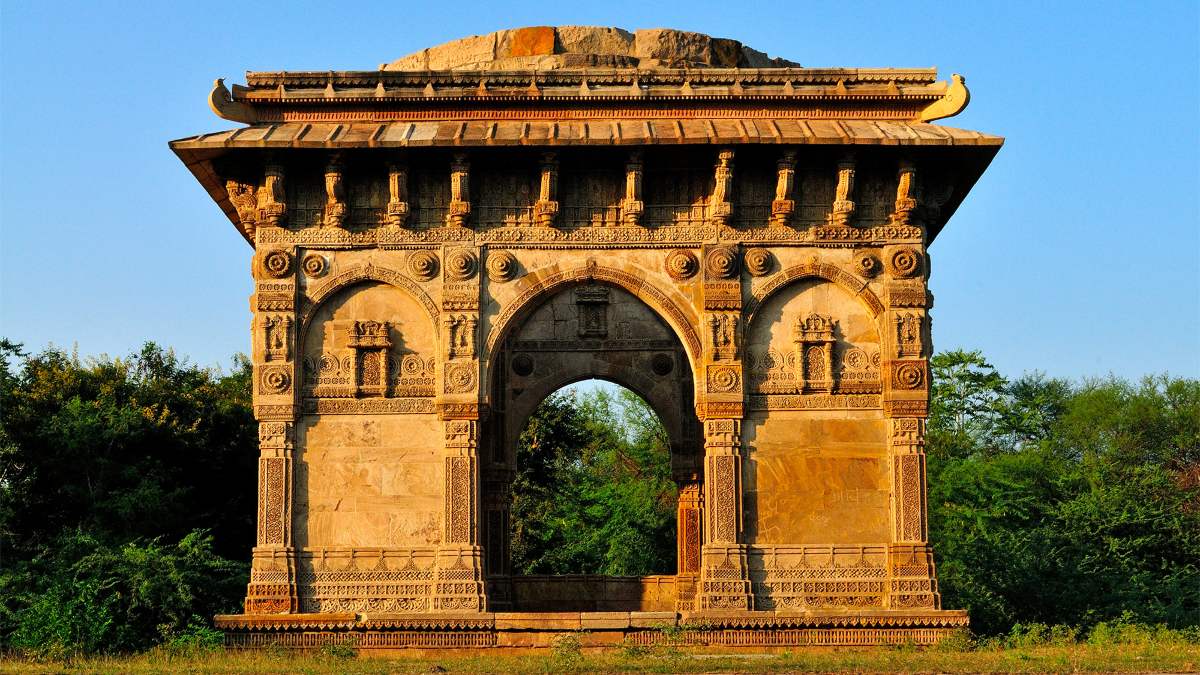“I saw the angel in the marble and carved until I set him free.” — Michelangelo
It is only steadfast patience that can get us the rewards we want. The story of Champaner is about a deep passion, and the unfolding of a charming architectural legacy that would have been lost if we had not worked to restore it.
I came to Baroda in 1969 to study architecture at the famous Maharaja Sayajirao University of Baroda. At that time my focus was swimming and architecture in that order. I was already a national swimmer. At the pool in Baroda, I was providentially “adopted” by Prof R.N. Mehta, (in-charge of swimmers at MSU) an archeologist who had spent 30 years excavating the buried 2,000-year-old city of Champaner-Pavagadh, 40 km from Baroda.
We visited the site every weekend and often on weekdays too, and I found myself getting captivated with the extraordinary range of buildings and architecture of over 2,000 years. During the day, I was studying architecture influenced by the West, an architectural style completely irrelevant to India, and the rest of the time I was amidst architecture rooted in context, place and culture. It soon became an obsession and a passion with me.
I was 23 years old when Prof Mehta asked me if he could “give” me the site. I replied saying it was neither his to give nor mine to take. Months later, he rephrased his request: “Give me 30 years of life”. “That’s simple,” I replied, “You’ve got it!”
I was young, arrogant and by that time had fallen in love with Champaner. He asked me to come to his home the next morning to give me all his work and to explain to me my mission — to get Champaner Pavagadh nominated as a UNESCO World Heritage Site. I agreed. However, next morning when I went to his home, I learnt that he had died in his sleep but not before putting all his work in a black trunk and putting my name on top of the trunk.
And thus, this became my mission; with no help from either UNESCO or India, it seemed impossible. UNESCO would not entertain me as I did not represent India, whilst India was not interested. Heritage and conservation was just not their priority.
YEARS OF STRUGGLE
Slowly, over 30 years I was able to push for more funds. The local ASI was able to identify over 60 sites covered with forests and vegetation and slowly document the 114 monuments above the ground. It put together the first plan of the buried city with its 3,000 buried buildings together as a city layout. This would be the first documentation of a buried city in the last century.
The top of the hill housed the Kalika Mata Temple — a Shaktipeeth where Parvathy’s toe had supposedly fallen. It was dated pre-first century AD. The fortification from the 1st to the 14th century was built on the five lower plateaus, each lower than the former, till Mohmed Begada built his capital at the base of Pavagadh, from 1495 to 1516.
I lectured worldwide; got global experts to visit the site and hosted the first World Congress in India on Heritage and Conservation at Champaner in 1987. Sir Bernard Feilden, an international authority on conservation, became my mentor and soon the stature of visitors to Champaner included diplomats and heads of state.
Thirty years later, in 2004, Champaner became India’s nomination at UNESCO for World Heritage Status. We won in June 2004, when I presented the site at Suzhou, China, the venue of the World Heritage Meet.
Since then the Heritage Trust of Baroda has been able to enact the first legislation in the country by the state government to look after a city site versus the existing legislation of looking after monuments or a group of monuments — followed by the ASI.
The 6 sq km site is a microcosm of secular India, as you see the architecture of the Rajputs, Jains and the pre-Sultanate times; all built together to form a representation of what we now know as India!
The Jami Masjid has been named as one of the 100 most important buildings in the world by a German scholar documenting the heritage of mankind. It’s the first mosque with a double clear storey, bringing light into the centre of the mosque, which is usually a dark space. Its exceptional decorations of lotus and other Hindu elements make its other distinctive features.
I was very keen to get the then President A.P.J. Abdul Kalam to put up the World Heritage plaque, which he graciously agreed. He said that he had never seen such an extraordinary site.
Today, Champaner attracts visitors worldwide but there is still a 100 years’ work to uncover this breathtaking site, which I hope the younger generation, who we are trying to engage and inspire, will surely accomplish.
The writer is an acclaimed and awarded architect.























